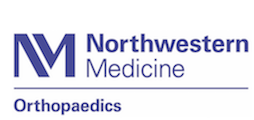|
|

|
« Back
Our 17-year-old son complains of back pain more often than his grandmother who has osteoarthritis of the spine (and she is quite a complainer). I don't think it's serious but there's always a niggling doubt in the back of my mind. Could he really have arthritis at this young age?
|
|
Osteoarthritis in this age group is not a likely cause of low back pain. But there are many other potential problems that could be linked with this symptom. For example, infection, tumors, trauma, fractures, and inflammatory conditions can cause back pain in adolescents.
Teens who are involved in sports can develop back pain from overextending the spine and/or from repetitive motions. If your son is involved in throwing activities (baseball, football, track and field) or gymnastics, martial arts, diving or dance, then repeated microtrauma of the soft tissues could be the root cause.
Although less common in younger people, teens can develop disc problems early on contributing to their back pain. There are also some inflammatory conditions that show up for the first time in teenagers. Back pain accompanied by early morning stiffness, night pain, or pain that is relieved by rest could be a sign of an inflammatory (rheumatologic) problem.
For back pain that has persisted past three months, a medical evaluation is advised. When the history and physical exam point to a possible problem that could be seen more closely with imaging studies, then X-rays, CT scans, MRIs, and sometimes ultrasound studies may be ordered.
X-rays help rule out (or rule in) bone fractures. For infections, inflammation, and some types of tumors, additional lab work (blood tests or urinalysis) may offer helpful results leading to an accurate diagnosis. An early diagnosis with follow-up treatment can help nip the problem in the bud, so-to-speak with fewer long-term consequences and better results.
|
References:
|
|
|
« Back
|
|
|
|
*Disclaimer:*The information contained herein is compiled from a variety of sources. It may not be complete or timely. It does not cover all diseases, physical conditions, ailments or treatments. The information should NOT be used in place of visit with your healthcare provider, nor should you disregard the advice of your health care provider because of any information you read in this topic. |
 | All content provided by eORTHOPOD® is a registered trademark of Mosaic Medical Group, L.L.C.. Content is the sole property of Mosaic Medical Group, LLC and used herein by permission. |
|
